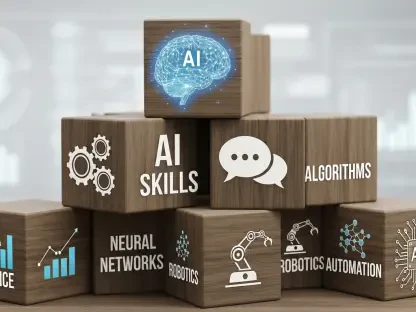Cloud computing has changed how we store, access, and process data. Stats show that the Global computing market jumped by 635% in just ten years, from 2010 to 2020. The US and Western Europe are still the central part of that pie chart.
More than 90% of organizations use the cloud. They create over 2.5 quintillion bytes of data every day. As technology evolves, our clouds will continue to grow until the pressure builds up so much that we will need to find a different solution for storing data.
The answer may lie in artificial intelligence, which is in high demand, especially in the cloud computing industry. Confirming that the need for a solution is impending, cloud providers expect capital expenditures to skyrocket. Investments will mainly revolve around upgrading data centers and deploying GPUs, TPUs, and crucial hardware components of AI applications.
The Advantages of Cloud-Fueled AI/ML
Machine learning and artificial intelligence have vast applications. They are here primarily to assist cloud computing in predictive maintenance and fraud detection. But we can expect them to seep into all procedures in the future. Recent demands for supply chain optimization and personalized marketing have further underlined the practicality of AI and ML. Not only can they cut costs, but they are also sustainable, therefore enabling organizations to realize their full potential.
Let us take a closer look at some of the essential benefits of cloud-fueled AI/ML:
1. Elasticity and Scalability:
Depending on the workload, AI models benefit from an elastic infrastructure that scales up and down easily. The best example of this is the supply chain industry we mentioned above. Employing AI and ML to manage repetitive tasks frees up resources in your supply chain to focus on more profit-yielding activities. AI can also be exceptionally effective in the training of your personnel, enabling managers to prioritize tasks that add value and cut down on onboarding costs.
2. Cost Efficiency Through Pay-as-You-Go Models
The disposable nature of cloud infrastructure works well with AI experimentation and innovation. For example, when a business is developing new products or services, it requires substantial resources to ensure agility and accelerate the launch date. Cloud-fueled AI and ML systems provide scalable computational power and storage capabilities to finish the job at a lower cost. AI and ML, in this case, have agility, shorten the product’s development lifecycle, and support experimentation, prototyping, and iteration. Moreover, the pay-as-you-go cloud services allow teams to take advantage of the services as needed or drop them to minimize costs and maximize efficiency.
3. Access to Data and Compute Resources
Cloud computing supports AI and ML by offering quick and seamless access to large-scale data stores. Whether you need to ingest high-velocity real-time streaming data or process massive volumes of batch data, AI/ML-powered cloud platforms will have the necessary infrastructure to handle large amounts of diverse data. Furthermore, AI and ML-fueled cloud platforms provide computational resources for Analytics workloads while simplifying data management. It is now easier for enterprises to access real-time insights to make informed decisions.
4. Pre-built Algorithms for Accelerated Innovation
As cloud AI technology advances, vendors offer services to ease the transition, automating their tools and improving platform governance and security solutions. Organizations can now rely on pre-trained AI models and ease their way into the integration before committing full-time. Most cloud providers come with pre-built algorithms and machine learning services. You can have your pick from neural language processing, data extraction, chatbots, vision enhancement, virtual agents, speech recognition, data anomaly detection, and more. These same vendors also offer incentives and investments to assist firms during the transition. Some of these incentives include educational courses for technology professionals who will learn how to operate the pre-built and pre-trained AI/ML assistants.
Artificial intelligence and machine learning programs also serve as sophisticated catalysts for accelerating its adoption. Cloud providers have started to leverage AI not only to enhance but also to promote platform solutions. A cloud is no longer a fluffy word for your online storage room; with an AI/ML-empowered cloud, you can get services like supply chain predictability, cyber threat security, advanced analytics, and predictive modeling. With these new modifications, the cloud is no longer a small cog in your organization but an innovative and interactive mechanism in your well-oiled machine.
Tips for Using AI and ML in the Cloud:
- Start with a smaller project: Don’t try to integrate AI and ML into every process. Begin by tackling a smaller project, then scale up or down as you learn about the possibilities.
- Take advantage of pre-built models: Pre-built models will save you time and effort as you learn how AI and ML in the cloud can benefit your specific business model. Then, as your company grows, you can opt to customize.
- Track and analyze your results: Remember to gather your cloud data and compare the pre-built AI/ML performance over time. Analytics can help you customize, scale, or completely substitute the models according to your needs. Again, you can rely on your provider’s pre-built cloud-based monitoring tools.
Overcoming AI/ML Challenges and Limitations
While ML algorithms have shown outstanding capabilities in solving complex problems, many organizations have reported difficulties implementing them. Machine learning systems require immense training infrastructure and computational resources, which is one of the common challenges of cloud migration. However, the advantages delivered by ML algorithms are too valuable to abandon.
Here are the limitations of artificial intelligence and machine learning integrated systems:
1. Ensuring Model Accuracy
The struggle ends with cloud computing borrowing its scalable resources from machine learning. However, while cloud ML platforms reduce the ML adoption model accuracy barrier, stellar performance remains a critical challenge. ML requires constant monitoring, which depends on robust tools to maintain quality standards, and these systems still need humans to monitor and operate them. We now see the practical limits of what AI can do without input: Algorithms cannot think and predict every possible outcome. They need to learn how to respond to every potential problem and require human optimization to operate at the highest standard.
2. Addressing Data Privacy and Security Concerns
AI/ML-powered clouds don’t override any of the common cloud security issues:
- 97% of cloud apps are unsanctioned
- 80% of organizations use multiple public and private clouds
- 39% of companies have moved at least half of their workload to the cloud
- 54% of all cloud-based companies have said they plan to move their workloads to the public cloud in the next year
These statistics show how exposed cloud-based machine learning systems are in public networks. Attackers can compromise them by manipulating ML results or running up in 1st structure costs, but the most dangerous attack is the denial of service. See the 3 Essential Strategies for Improved Data Protection in the Cloud here.
3. Bridging the Skills Gap and Promoting AI Literacy
Despite open-source AI and ML tools and services, businesses still struggle with attracting and retaining talent. As mentioned, machines still need supervision. Building a proficient ML team requires a lot of resources to train people with a skill set that includes data science, software engineering, and cloud computing. Organizations are responsible for bridging the skills gap to promote AI literacy by investing in training programs. But the good news is that artificial intelligence won’t take our jobs any time soon.
The Future of AI/ML-Driven Cloud Computing
Combining AI/ML with cloud computing opens up limitless possibilities in business operations. AI enables predictive analytics without a human needing to code the algorithms line by line. Machine learning makes collaboration and knowledge sharing easier than ever before.
Sometime in the near future, we will probably forget how users today had to write extensive lines of code to develop applications. Companies can now choose from low-code and no-code cloud solutions, making AI and ML much more accessible. However, organizations need to continue their open-sourcing initiatives to accelerate innovations. The potential for transformative change at scale through AI and ML-powered cloud systems should be well worth the effort and investments.
Conclusion
As you can see, AI/ML integration with cloud computing opens systems to many opportunities. Streamlining operations, enhancing efficiency, and driving growth will become cheaper and faster as the technology evolves. There are still challenges we have to tackle, such as model accuracy, data privacy, and security. Despite these obstacles that the AI/ML researchers plan to solve in the near future, enterprises can start benefiting from this innovation by investing in training programs now.
In essence, the combination of AI/ML and cloud computing is already showing up as a fundamental shift in how we approach and leverage data and technology to drive business outcomes.









